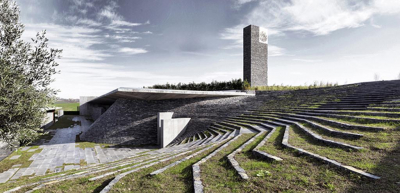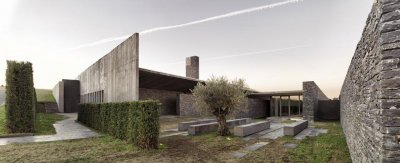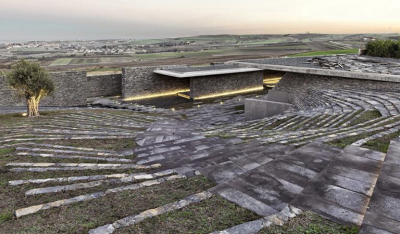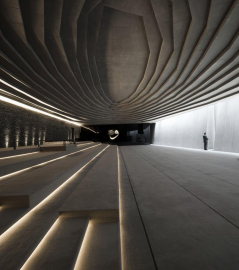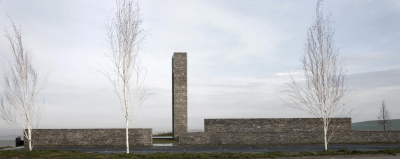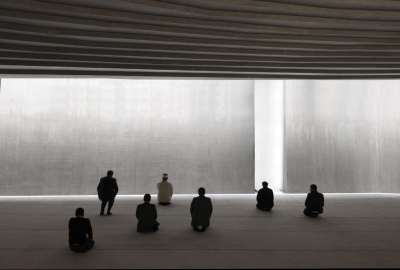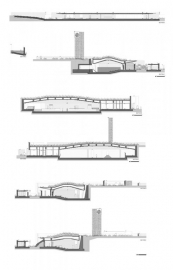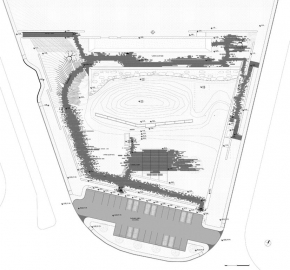Sancaklar Mosque
The building was designed as a response to the Sancaklar Family who wanted to build a mosque on a site overlooking the Buyukcekmece Lake, at a neighborhood of many gated communities. The main issue was a confrontation with the classical Ottoman mosque scheme, which became a blank anachronism with todays construction techniques.
Depending on the fact that a mosque does not have a predefined form and anywhere clean may be a prayers room, the project focused solely on the essence of a religious space, by distancing itself from discussions based on form. Physical and emotional pleasure was at the forefront. The design aimed at representing purest forms of light and matter, just as a primary inner world, free from all cultural burdens. The disappearance of the building in the slope of the site, anchorage to the ground as if it has always been there, getting rid of all temporal and cultural engagements were aimed.
The project site is located in a prairie landscape that is separated from the surrounding suburban gated communities by a busy highway. The only visible elements of the mosque are the garden surrounded by horizontal courtyard walls and a vertical prismatic mass of stone (minaret), which depicts that this is a place. The inscription that is clarified when one approaches enough, clarifies that this is a place for praying. The cascades following the natural slope turns into steps as one moves through the landscape, down the hill and leads to the entrance space at the lower level. The tea house, communal space and the library just across the mosque enriches the gathering feature of this open space. The prayer hall reached directly from this level, a simple cave like space, becomes a dramatic and awe inspiring place to pray and be alone with God. The interior is simple where materials put forward themselves as they are, free from redundancies. The walls and the ceiling strengthen the feeling of purification and humbleness. The space may be defined as a meditation and thinking space.
The only ornament seems to be the daylight that leaks from the Qiblah wall, changing according to the time of the day. The slits and fractures along this wall enhances the directionality of the prayer space. A very special element is the letter waw on the reflective black wall of infinity. First time in mosque architecture, women have the chance to pray just in the same row as the men, contrary to being at the back as in all others. They are placed at an elevated and separated part of the hall. The complex includes the ablution halls and restrooms, that are adjacent, and the imams house from where he can reach the hall directly.
The building blends in completely with the topography and in this peaceful way, delivers back the form of the ground. This submerging feature and the green roof all above provides a natural insulation against heat loss and gain. Landscape materials are mainly of rural plants that need no maintenance and that merges with the prairie of the surroundings. All these features prevents the use of extra energy and water.

